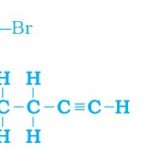Page 128 Question 1. What is the importance of DNA copying in reproduction? Answer 1 DNA (Deoxyribonucleic acid) is the genetic material found in the chromosomes, which are present in the nucleus of a cell. Additional copies of DNA are made during replication which is necessary for the new cells formed after cell division. Copying of DNA is the basic event of reproduction … [Read more...] about Chapter 8 How do Organisms Reproduce
Class 10
Chapter 7 Control and Coordination
Page 119 Question 1. What is the difference between a reflex action and walking? Answer 1 A reflex action may be defined as a rapid, involuntary response to a particular stimulus. It does not involve any thinking process. For example: We immediately close our eyes when the bright light is focused. Walking is a voluntary action. It is under our conscious … [Read more...] about Chapter 7 Control and Coordination
Chapter 6 Life Process
Page 95 Question 1. Why is diffusion insufficient to meet the oxygen requirements of multicellular organisms like humans? Answer 1 Simple diffusion is insufficient to meet the requirements of multicellular organisms like humans because multicellular organisms, are not in direct contact with the surrounding environment as they are covered by layers. Question 2. What … [Read more...] about Chapter 6 Life Process
Chapter 5 Periodic Classification of Elements
Page 81 Question 1. Did Dobereiner’s triads also exist in the columns of Newlands’ Octaves? Compare and find out. Answer 1 Only one triad of Dobereiner’s triads exists in the columns of Newlands’ octaves. The triad formed by the elements Li, Na, and K of Dobereiner’s triads also occurred in the columns of Newlands’ octaves. Dobereiner’s … [Read more...] about Chapter 5 Periodic Classification of Elements
Chapter 4 Carbon and its Compounds
Page 61 Question 1. What would be the electron dot structure of carbon dioxide which has the formula CO2? Answer 1 Electron dot structure of CO2: Atomic number of carbon (C) = 6 Electronic configuration of carbon (C) = 2, 4 Valence electrons of carbon (C) = 4 Atomic number of oxygen (O) = 8 Electronic configuration of oxygen (O) = 2, 6 Valence electrons of … [Read more...] about Chapter 4 Carbon and its Compounds



